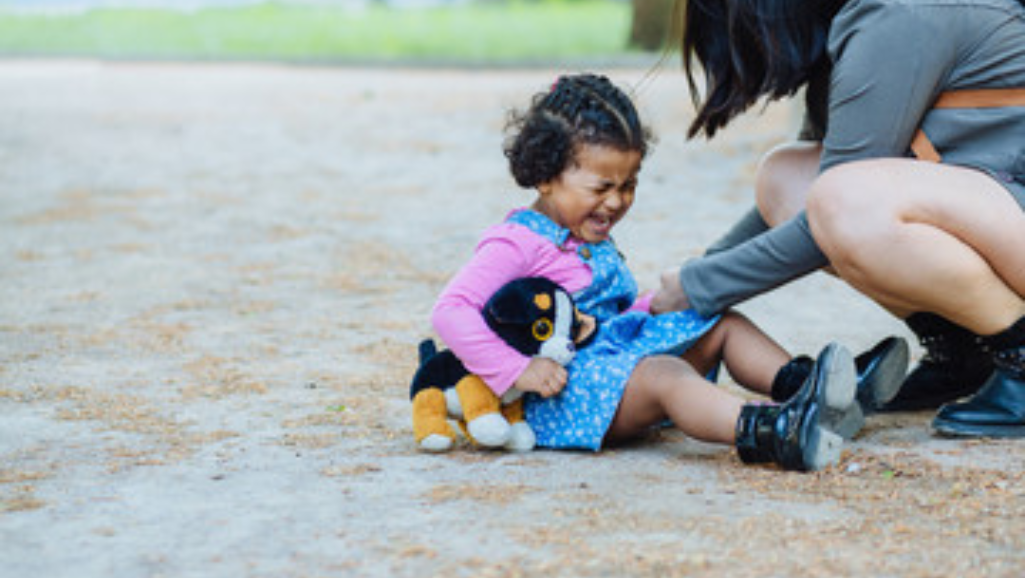Are you struggling with how to handle a crying child in kindergarten? Don’t worry, we’ve got you covered. In this article, we’ll guide you through the steps of recognizing the signs of distress, establishing a comforting environment, and implementing calming techniques and distractions. By using empathetic communication and active listening, you’ll be able to effectively support the child and collaborate with parents and other professionals. So, let’s dive in and learn how to handle those tears with confidence.
Recognizing the Signs of Distress
Recognize the signs of distress in a crying child in kindergarten. When a child is upset, it is important to be able to identify the signals that indicate they are in distress. One key aspect of this is understanding the child’s coping strategies. Every child copes with stress differently, and some may cry as a way of expressing their emotions. However, it is crucial to differentiate between normal crying and distress. Look for signs such as intense sobbing, inconsolability, or a prolonged period of crying that does not subside.
Another important aspect is emotional regulation. Children in kindergarten are still developing their emotional regulation skills, and they may struggle to manage their feelings effectively. Signs of distress can include increased heart rate, rapid breathing, flushed face, or clenched fists. These physical signs are indications that the child is experiencing intense emotions and may need support in regulating them.
Recognizing the signs of distress in a crying child is the first step in providing the necessary assistance. By understanding their coping strategies and emotional regulation, you can better address their needs and offer appropriate guidance. Helping them develop healthier coping mechanisms and teaching them strategies to regulate their emotions can greatly benefit their overall well-being.
Establishing a Comforting Environment
To create a comforting environment for a crying child in kindergarten, it is important to understand their needs and provide a supportive atmosphere that fosters emotional well-being. Here are some ways to establish a comforting environment:
- Creating a safe space: Ensure that the classroom is a safe and secure place for the child. This can be done by having cozy corners or designated areas where they can retreat to when they feel overwhelmed. Make sure the space is quiet and free from distractions.
- Building trust: Establishing a sense of trust is crucial for the child to feel comfortable in the kindergarten environment. Take the time to build a relationship with the child, showing them that you are there to support and listen to them. Encourage open communication and validate their feelings.
- Providing consistent routines: A predictable routine can provide a sense of stability for the child. Stick to a consistent schedule, as it helps them feel secure and less anxious. Clearly communicate the daily activities, transitions, and expectations to reduce any uncertainty.
- Encouraging peer support: Foster a community of kindness and empathy among the children. Encourage them to support their classmates who may be feeling upset or overwhelmed. Teach them to be compassionate and understanding, promoting a sense of belonging and emotional support.
Empathetic Communication and Active Listening
Establish open lines of communication by actively listening and showing empathy towards a crying child in kindergarten. When a child is upset, it is crucial to provide emotional support and build trust through empathetic communication. Actively listening to their concerns and validating their emotions can help create a safe and comforting environment for them to express themselves.
To effectively communicate and connect with a crying child, it is important to show empathy and understanding. By acknowledging their emotions and letting them know that you care, you can help them feel heard and supported. Here is an example of how empathetic communication can be achieved:
| Empathetic Communication | Active Listening |
|---|---|
| “I can see that you’re feeling sad. What happened?” | “It sounds like you’re upset because your friend took your toy without asking. Is that right?” |
| “I understand how frustrating that can be.” | “It must have made you feel angry and upset when your toy was taken away.” |
| “I’m here to listen and help you through this.” | “I want you to know that I’m here for you and ready to listen.” |
Implementing Calming Techniques and Distractions
To help calm a crying child in kindergarten, use calming techniques and distractions to assist them in regulating their emotions. Here are some effective strategies you can implement:
- Breathing exercises: Encourage the child to take slow, deep breaths in and out. Teach them to inhale deeply through their nose, hold for a few seconds, and exhale slowly through their mouth. This simple technique can help them relax and regain control over their emotions.
- Sensory activities: Engage the child in sensory activities that can divert their attention and provide a calming effect. Offer them a stress ball or a fidget toy to squeeze or manipulate. You can also introduce sensory play materials such as playdough, kinetic sand, or water beads. These activities can help the child focus their attention on something soothing and reduce their distress.
- Music and movement: Play soft, calming music in the background to create a peaceful atmosphere. Encourage the child to engage in gentle movements like swaying, stretching, or dancing to the rhythm. The combination of music and movement can help distract the child from their distress and promote relaxation.
- Visual distractions: Provide the child with visual distractions that can capture their attention and redirect their focus. Show them a colorful picture book, a mesmerizing lava lamp, or a calming sensory bottle filled with glitter and water. These visual stimuli can help shift their attention away from their distress and bring a sense of calmness.
Collaborating With Parents and Other Professionals
When collaborating with parents and other professionals, it is essential to maintain open communication and work together to support the emotional needs of a crying child in kindergarten. Building a strong parent-teacher partnership is crucial in creating a supportive environment for the child. By involving parents in the process, you can gain insights into the child’s behaviors, triggers, and any strategies that have worked in the past. Regularly sharing updates, observations, and progress can help parents feel informed and involved in their child’s emotional well-being.
Additionally, being part of a multidisciplinary support network can provide valuable resources and expertise. Collaborating with other professionals such as psychologists, counselors, and occupational therapists can help develop a holistic approach to address the child’s emotional needs. These professionals can offer guidance, strategies, and interventions to support the child’s emotional regulation and overall development.
To illustrate the importance of collaboration, here is a table showcasing the benefits of working together with parents and other professionals:
| Benefits of Collaboration |
|---|
| Enhanced understanding of the child’s emotional needs |
| Sharing of strategies and interventions |
| Coordinated support for the child |
| Holistic approach to address emotional well-being |




